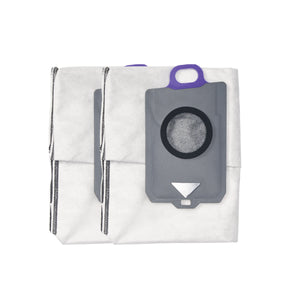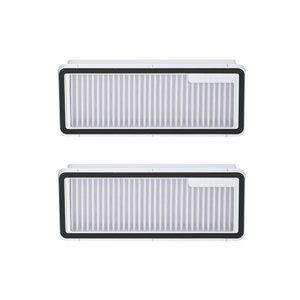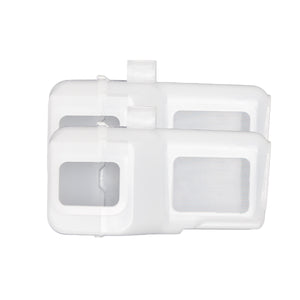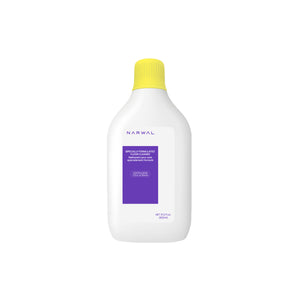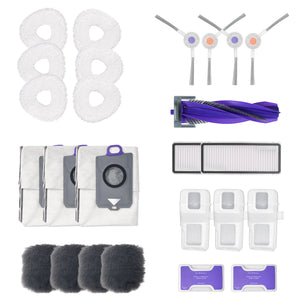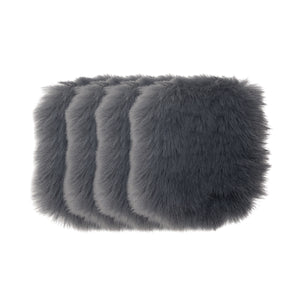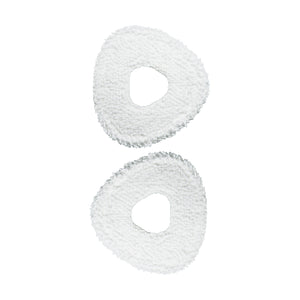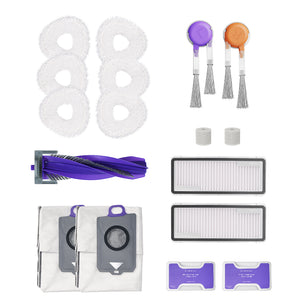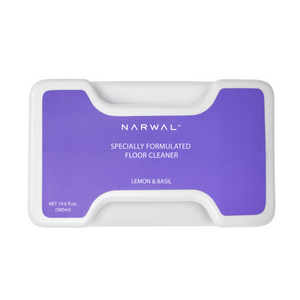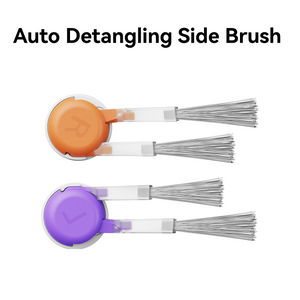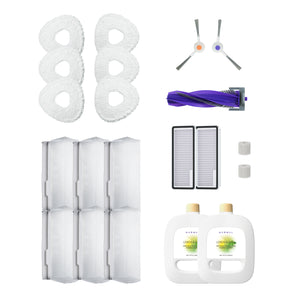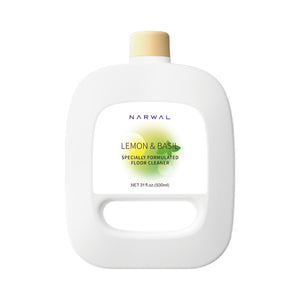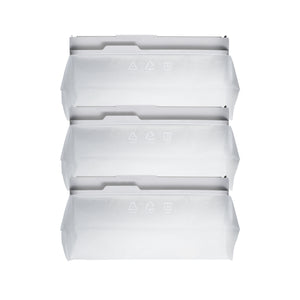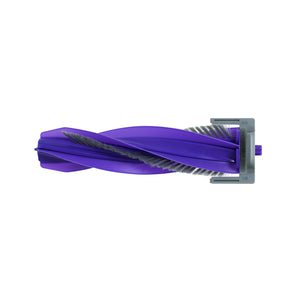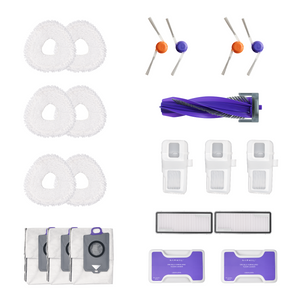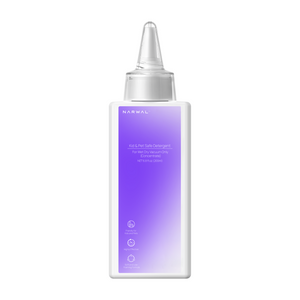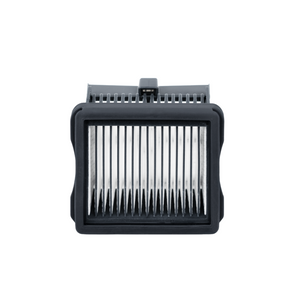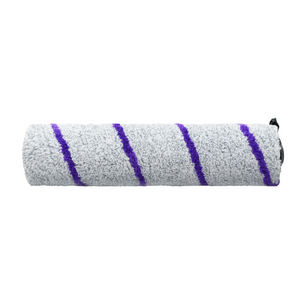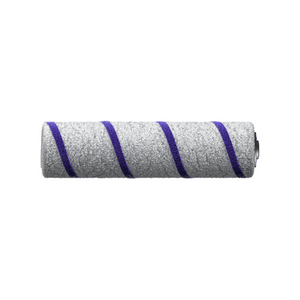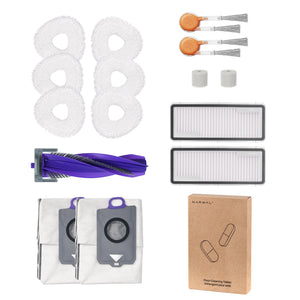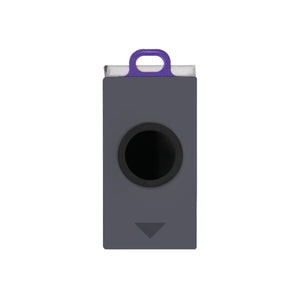Sticky floors can be annoying, but you can maintain them effortlessly with the right techniques and equipment. Keeping your floors clean and spotless is simple when you know how. This guide will explore five effective ways to clean sticky floors, including the benefits of using the advanced Narwal robot vacuum and mop. Learn how to maintain a clean, sticky-free home effortlessly.
What Causes Sticky Floors?
Sticky floors can be frustrating and unsightly, but understanding the root causes is the first step to solving the problem. Here are the key reasons why your floors might feel sticky:
-
Spilled Liquids: Spills from sugary drinks, sauces, or other liquids can dry and leave behind a sticky residue. Promptly cleaning up spills can prevent this issue.
-
Cleaning Product Residue: Using too much cleaner or not rinsing properly can leave a sticky film on floors. Always follow product instructions and rinse thoroughly.
-
Dirt and Grime Buildup: In high-traffic areas, dirt and dust can mix with moisture, creating a sticky layer. Regular sweeping and mopping can help reduce buildup.
-
Incorrect Cleaning Products: Using the wrong cleaner for your floor type can leave behind a sticky residue. Always choose products designed for your specific flooring material.
-
High Humidity: Moisture in the air can interact with dust and dirt, making floors feel sticky. Proper ventilation and dehumidifiers can help control humidity levels.
-
Worn-Out Floor Finishes: Over time, floor finishes can degrade, leading to a sticky or tacky surface. Refinishing your floors may be necessary to restore their smoothness.
-
Pet Messes: Pet accidents or tracked-in paw prints can leave sticky residues. Regularly cleaning pet areas and wiping paws can minimize this issue.
-
Food Particles: Crumbs and food debris, especially in kitchens, can stick to floors and attract more dirt. Frequent sweeping and spot cleaning are essential.
-
Improper Mopping Techniques: Using dirty mop water or not changing it frequently can spread sticky residues. Always use clean water and replace it as needed.
-
Lack of Regular Cleaning: Floors that aren’t cleaned regularly are more likely to accumulate sticky residues. Establishing a consistent cleaning routine can prevent this.
By identifying the cause of sticky floors, you can take targeted steps to keep your floors clean and smooth. Regular maintenance and using the right cleaning methods are key to preventing this common issue.
What Steps to Take Before Cleaning Sticky Floors?

Before diving into cleaning sticky floors, proper preparation is essential to ensure effective and safe results. Here’s a step-by-step guide to help you get started:
Identify Your Floor Type
-
Determine whether your floors are hardwood, tile, laminate, vinyl, or another material.
-
Different floor types require specific cleaning methods and products to avoid damage.
Gather the Right Cleaning Supplies
Collect the necessary tools and products to tackle sticky floors effectively:
-
Broom or Vacuum Cleaner: For removing loose dirt and debris.
-
Microfiber Mop or Cloth: Ideal for gentle yet thorough cleaning.
-
Bucket: For mixing cleaning solutions.
-
Cleaning Solutions: Use appropriate products for your floor type, such as:
-
Mild dish soap
-
White vinegar (diluted with water)
-
Floor-specific cleaners
-
Warm Water: Enhances the effectiveness of cleaning solutions.
-
Soft-bristle Brush or Scrubber: For tackling stubborn sticky spots.
-
Clean Towels or Rags: For drying and buffing the floor.
Clear the Area
-
Remove furniture, rugs, and other obstacles from the cleaning area.
-
Pick up small objects like toys, shoes, or cables to ensure the floor is fully accessible.
Remove Loose Dirt and Debris
-
Use a broom or vacuum cleaner to sweep the entire floor, paying special attention to corners and edges.
-
This step prevents dirt from spreading or mixing with cleaning solutions, which can make the floor even stickier.
Pre-Treat Stubborn Sticky Spots
-
For heavily sticky areas, apply a small amount of cleaning solution directly to the spot.
-
Let it sit for a few minutes to loosen the residue before scrubbing gently with a soft-bristle brush.
Prepare Your Cleaning Solution
-
Mix your chosen cleaning solution with warm water in a bucket.
-
For example, combine 1 cup of white vinegar with 1 gallon of warm water for a natural and effective cleaner.
Test the Cleaning Solution
-
Before applying the solution to the entire floor, test it on a small, inconspicuous area to ensure it doesn’t damage or discolor the flooring.
By following these steps, you’ll be well-prepared to clean sticky floors effectively and safely. Proper preparation not only makes the cleaning process easier but also ensures long-lasting results.
5 Methods for Cleaning Sticky Floors
Method 1: Using Warm Water
-
Prepare Warm Water: Fill a bucket with warm water (not hot, as it can damage delicate surfaces).
-
Mop the Floor: Dip a microfiber mop into the water, wring it out well, and mop the floor in small sections.
-
Rinse Frequently: Rinse the mop often to avoid spreading sticky residues.
-
Dry the Floor: Use a clean, dry cloth or mop to wipe the floor and prevent water spots.
-
Why It Works: Warm water helps dissolve sticky residues without the need for harsh chemicals.
-
Best For: Most floor types, including hardwood, tile, and laminate.
Method 2: DIY Vinegar Cleaner

-
Mix the Solution: Combine 1 cup of white vinegar with 1 gallon of warm water in a bucket.
-
Mop the Floor: Dip a mop into the solution, wring it out, and clean the floor in sections.
-
Rinse with Fresh Water: After mopping, rinse the floor with clean water to remove any vinegar smell.
-
Dry Thoroughly: Use a dry mop or towel to dry the floor completely.
-
Why It Works: Vinegar is a natural cleaner that cuts through grease and grime.
-
Best For: Tile, vinyl, and sealed hardwood floors. Avoid using on stone or marble.
Method 3: Targeted Spot Treatment
-
Identify Sticky Spots: Locate areas with stubborn sticky residues.
-
Apply Cleaning Solution: Use a small amount of warm water, vinegar solution, or a paste made of baking soda and water.
-
Scrub Gently: Use a soft-bristle brush or sponge to scrub the spot gently.
-
Rinse and Dry: Wipe the area with a damp cloth and dry it thoroughly.
-
Why It Works: Spot treatment focuses on tough areas without over-cleaning the entire floor.
-
Best For: Small, stubborn sticky spots on any floor type.
Method 4: Appropriate Cleaning Solutions

-
Choose the Right Cleaner: Select a cleaner designed for your floor type (e.g., wood, tile, laminate).
-
Follow Instructions: Dilute the cleaner as directed on the label.
-
Mop the Floor: Apply the solution with a mop, working in small sections.
-
Rinse Thoroughly: Rinse the floor with clean water to remove any cleaner residue.
-
Dry Completely: Use a dry mop or towel to prevent streaks and stickiness.
-
Why It Works: Floor-specific cleaners are formulated to clean and protect your flooring without leaving residues.
-
Best For: All floor types, depending on the product.
Tips for Success:
-
Test First: Always test cleaning solutions on a small, inconspicuous area before applying them to the entire floor.
-
Avoid Over-Wetting: Use minimal water on hardwood and laminate floors to prevent warping or damage.
-
Regular Maintenance: Clean floors regularly to prevent sticky residues from building up.
By following these methods, you can effectively clean sticky floors and keep them looking their best!
Method 5: Utilizing a Robot Vacuum and Mop
Besides the mentioned techniques, opting for a robot vacuum and mop is an excellent option. It has several advantages for cleaning sticky floors.
Advantages of Using a Robot Vacuum and Mop

Firstly, it provides hands-free cleaning, which saves time and effort. Simply set it up, and it will handle the cleaning automatically.
Secondly, the robot ensures thorough and efficient coverage. It maneuvers through your house, accessing challenging spots such as beneath furniture and in narrow spaces. This is especially handy for eliminating stubborn residues often overlooked during manual cleaning.
Additionally, the robot vacuum and mop uses advanced sensors to detect and focus on dirtier areas. This means it can spend extra time on particularly sticky spots, ensuring a more effective clean.
Lastly, you can customize cleaning schedules to suit your needs. Schedule the robot to clean at times that fit your routine best. Consistent cleaning stops sticky residue from forming.
By using a robot vacuum and mop, you ensure a consistently clean and sticky-free floor with minimal effort, making it an effective solution for maintaining spotless floors.
The Narwal robot vacuum and mop is the ideal choice for you: Narwal Freo X Ultra.
Adaptability to Various Floor Types
Narwal Freo X Ultra excels on different floor types, including hardwood, tile, laminate, and carpet. This versatility allows seamless cleaning of multiple surfaces without changing tools or methods. It adjusts its cleaning approach for optimal results, eliminating the need for different cleaning plans and simplifying the process for homes with mixed flooring.
Powerful Suction
The Narwal Freo X Ultra features 8,200 Pa suction power, tackling stubborn dirt and sticky residues. It ensures thorough cleaning by lifting and removing debris, dust, and sticky substances from hard floors and deep within carpets. This comprehensive clean leaves surfaces spotless and free from any residue that manual cleaning might miss.
Advanced Mopping Technology

The patented Rouleaux robot mop heads press down with 12 N force and spin at 180RPM, scrubbing tough, sticky stains effectively. AI DirtSense technology detects dirt levels and continues mopping until the floors are clean. EdgeSwing Technology allows cleaning up to the edges and into corners, providing a more thorough and automated cleaning experience compared to manual methods.
Zero Tangling Brush System
The zero tangling brush system uses a conical cleaning brush on a floating arm, efficiently handling hair and pet fur. Debris is directed straight into the dust bag, preventing tangles and ensuring consistent cleaning power. This system offers a hassle-free experience for pet owners and families with long hair.
Maintenance-Free Docking Station

The maintenance-free docking station automatically washes, dries, and refills the mops with detergent and water. This hands-free maintenance ensures the mops are always clean and ready for the next session. The dock also performs self-cleaning and drying, which makes upkeep easier and guarantees peak functionality.
Self-Contained Dust Processing
The dust management system inside the robot compacts debris, allowing up to seven weeks without maintenance. The disposable dust bag makes disposal clean and effortless, avoiding the noisy and messy process typical of traditional robot cleaners.
In summary, the Narwal Freo X Ultra’s advanced features and cleaning technologies make it an exceptional solution for sticky floors.
How Can You Prevent Sticky Floors? Maintenance Tips
Maintaining clean, sticky-free floors requires consistent effort and the right strategies. By adopting these simple yet effective practices, you can keep your floors spotless and prevent sticky residues from building up.
Regular Cleaning Routines
-
Sweep or Vacuum Daily: Regularly remove loose dirt, dust, and debris to prevent them from mixing with moisture and creating sticky spots.
-
Use a Robot Vacuum and Mop: Devices like the Narwal Freo Z Ultra can automate daily cleaning, ensuring your floors stay fresh with minimal effort.
-
Mop Weekly: Use a microfiber mop and the appropriate cleaning solution to remove any lingering residues.
[cta:narwal-freo-z-ultra-robot-vacuum-mop]
Immediate Response to Spills
-
Act Quickly: Wipe up spills as soon as they happen using a damp cloth or paper towel. This prevents sticky residues from forming and makes cleaning easier.
-
Use Warm Water for Sticky Spills: For sugary or greasy spills, use warm water to dissolve the residue before wiping it away.
Proper Use of Cleaning Products
-
Follow Instructions: Always use the recommended amount of cleaning solution. Using too much can leave behind a sticky film.
-
Choose the Right Cleaner: Select products designed for your specific floor type (e.g., hardwood, tile, laminate) to avoid damage and ensure effective cleaning.
-
Rinse Thoroughly: After mopping, rinse the floor with clean water to remove any cleaning product residue that could attract dirt.
Prevent Dirt from Entering Your Home
-
Use Doormats: Place doormats at all entrances to reduce the amount of dirt and debris tracked indoors.
-
Remove Shoes Indoors: Encourage family members and guests to remove their shoes before entering to minimize dirt and moisture on floors.
Protect High-Traffic Areas
-
Use Floor Mats or Rugs: Place mats or rugs in areas prone to spills or heavy foot traffic, such as kitchens, dining rooms, and entryways.
-
Clean Mats Regularly: Wash or vacuum mats and rugs frequently to prevent dirt buildup that can transfer to floors.
Maintain Your Cleaning Tools
-
Clean Mop Heads and Buckets: Always use clean water and mop heads to avoid spreading dirt or sticky residues.
-
Replace Worn-Out Tools: Regularly check and replace mop heads, brushes, and vacuum filters to ensure optimal cleaning performance.
Control Humidity Levels
-
Use a Dehumidifier: High humidity can make floors sticky by attracting dust and dirt. A dehumidifier helps maintain a balanced indoor environment.
-
Ventilate Your Home: Open windows or use fans to improve air circulation and reduce moisture buildup.
Schedule Deep Cleaning Sessions
-
Monthly Deep Cleaning: Use a floor-specific cleaner or a natural solution (like diluted vinegar) to deep clean your floors and remove any hidden sticky residues.
-
Inspect for Wear and Tear: Check your floors for worn-out finishes or damage that could contribute to stickiness, and address these issues promptly.
By following these maintenance tips, you can prevent sticky floors and keep your home looking clean and inviting. For added convenience, consider using the Narwal Freo Z Ultra to automate daily cleaning and ensure consistent results with minimal effort.
Conclusion
Maintaining floors without sticky residues is possible using proper methods and equipment. The Narwal robot vacuum and mop offers unparalleled cleaning capabilities, ensuring your floors remain spotless and hygienic with minimal effort. Implement these methods and tips to enjoy a consistently clean home.





















